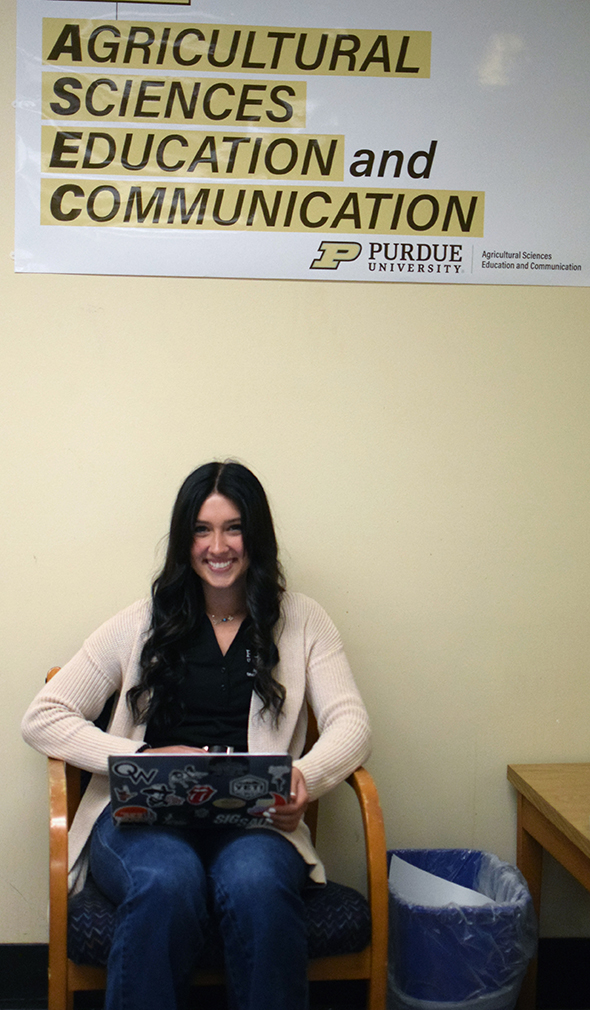Student Profile: Mel Hasler
AgCom Student Making Connections, Spreading the Word About Agriculture
By Olivia Kuhn
In her free time between classes, you can find Mel Hasler on the third floor of Purdue’s Lilly Hall. The hallway is home to Purdue Agricultural Sciences Education and Communication, and Hasler goes there to hang out in the study space, joke with other students going to and from class, talk with professors, and catch up on homework.
It’s a place the sophomore agricultural communication major from Hope, Indiana, likes to go to connect with others in the program.
 Mel Hasler says that Purdue Agricultural Communication has helped her connect with many people who will help her work to bridge the farm to plate communication gap. Photo by Olivia Kuhn
Mel Hasler says that Purdue Agricultural Communication has helped her connect with many people who will help her work to bridge the farm to plate communication gap. Photo by Olivia Kuhn “I always manage to run into just the right person,” Hasler said.
Being able to see those people is very important to Hasler because she is all about making connections — with her peers, with faculty, with AgCom professionals, and with other people in the agricultural industry. Agricultural communication has enabled Hasler to do just that. But starting college during the pandemic, making those connection wasn’t always as easy.
“When I first came to Purdue, I was a freshman struggling through Zoom university,” she said.
Just like everywhere else, Purdue had social distancing and other rules to keep students safe. These rules made it difficult for Hasler to makes the connections that she craved. This past year, Hasler said there have been far more opportunities.
“When restrictions began to loosen up, I found myself hanging out on the third floor of Lilly every day with my peers who went through the same exact thing,” Hasler said. “I started to build friendships with people in my major and soon found a network of supportive people who had my back.”
Hasler said connecting with supportive people is a big part of the AgCom experience. She said the size of the program plays a big role in that.
“Although people might see it as a weakness, we are an exceedingly small department,” Hasler said. “I see it as a strength, because you make such strong connections and it’s a supportive community who are looking out for your best interests.”
Hasler has been able to pursue more interests this last year that have allowed her to create deeper connections. She became an officer in the Purdue’s chapter of Agricultural Communicators of Tomorrow, a national student organization that connects AgCom students from programs around the country.
To Hasler, being able to connect with many different people will help her teach the public how a big of role agriculture plays in their lives. AgCom is playing a role in helping her begin to achieve that goal.
“As agriculturalists we need to work towards bridging the farm to plate communication gap, and I hope to be a part of the integral solution,” Hasler said.





